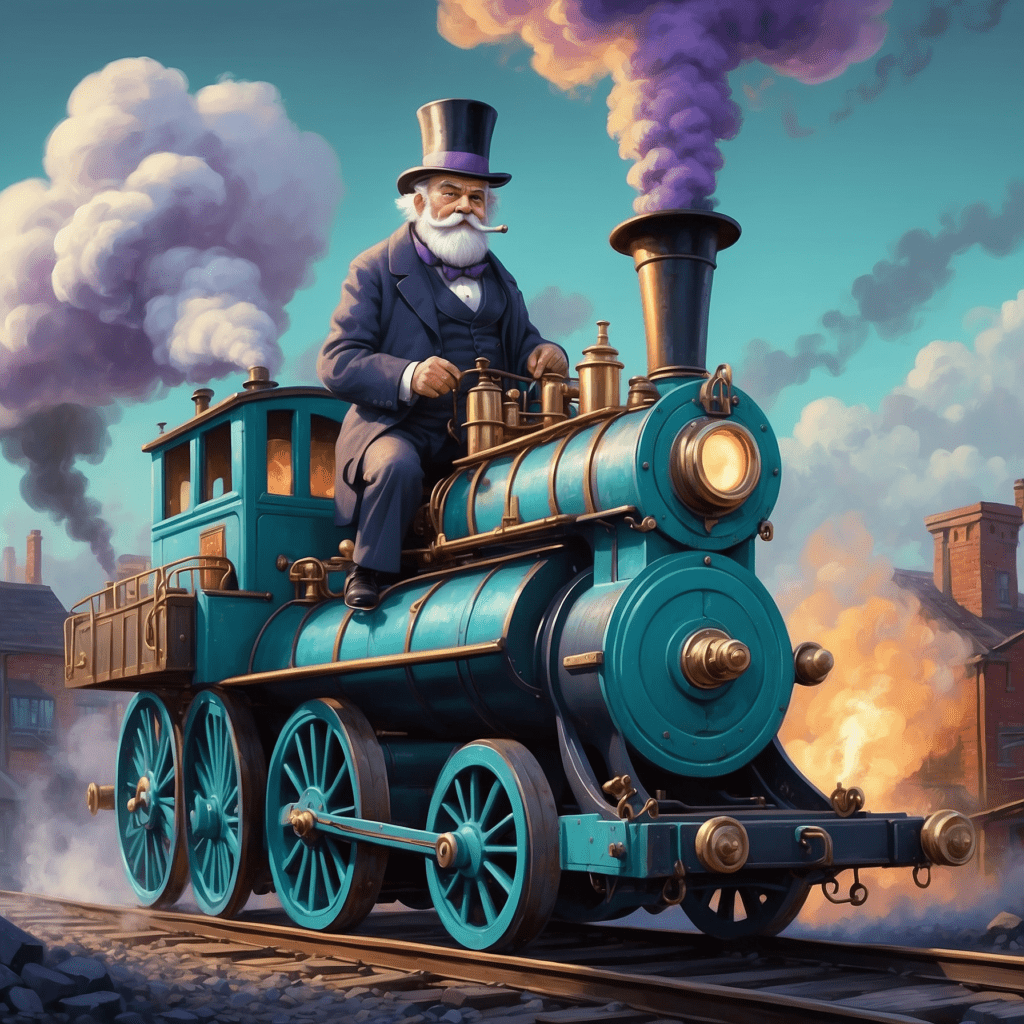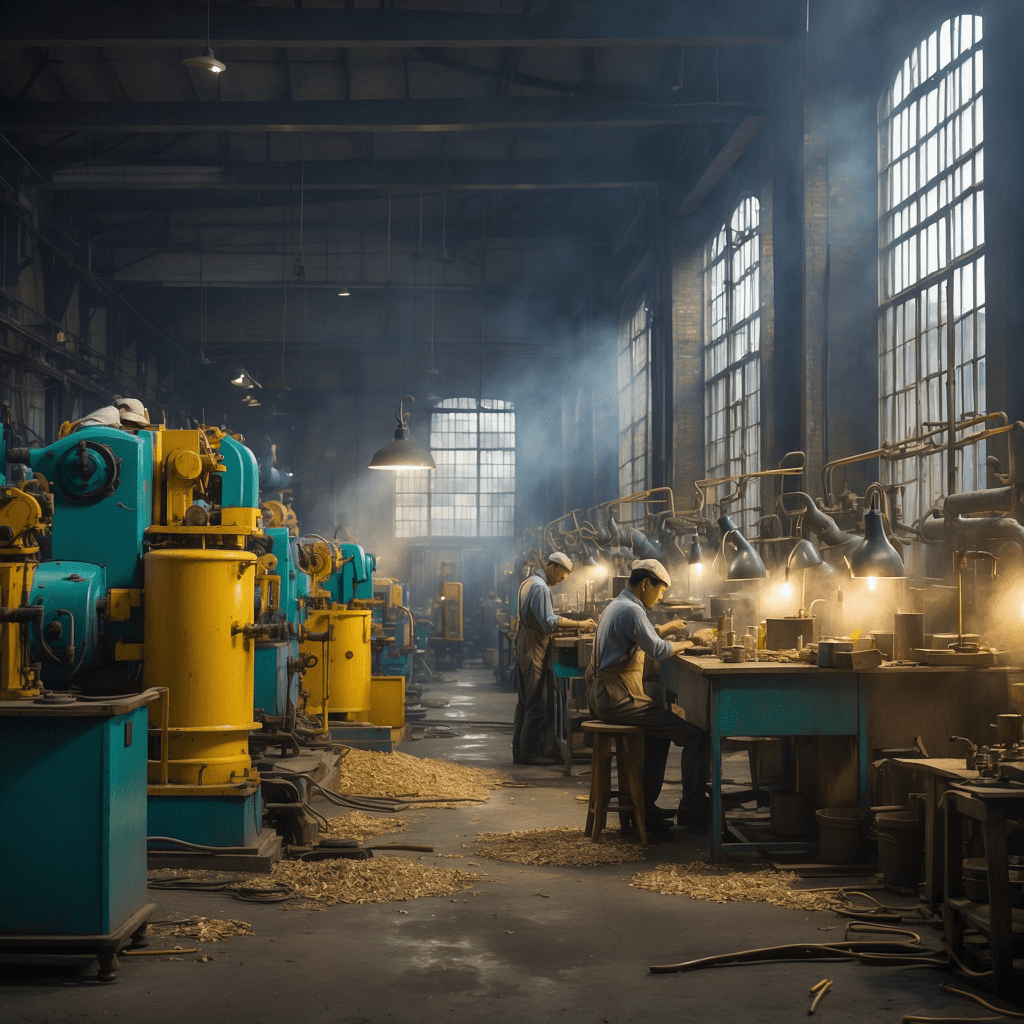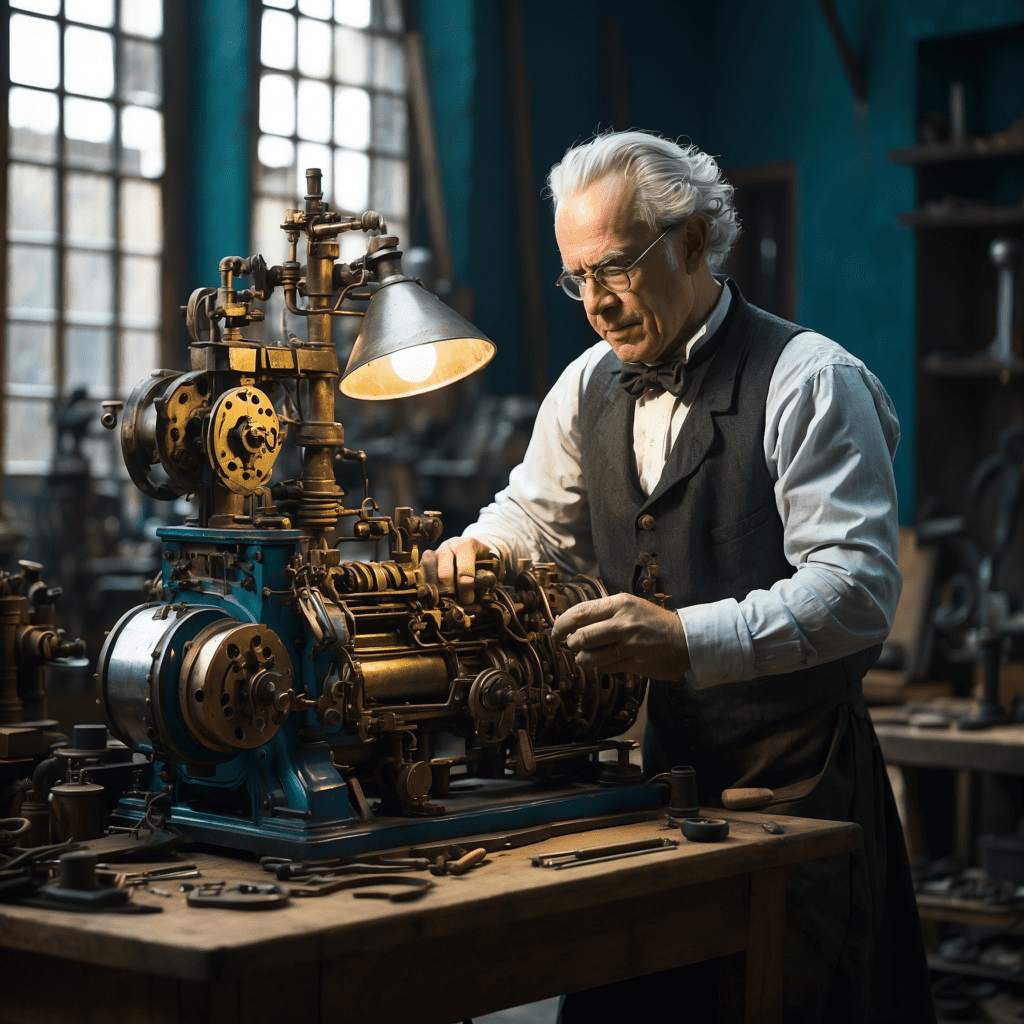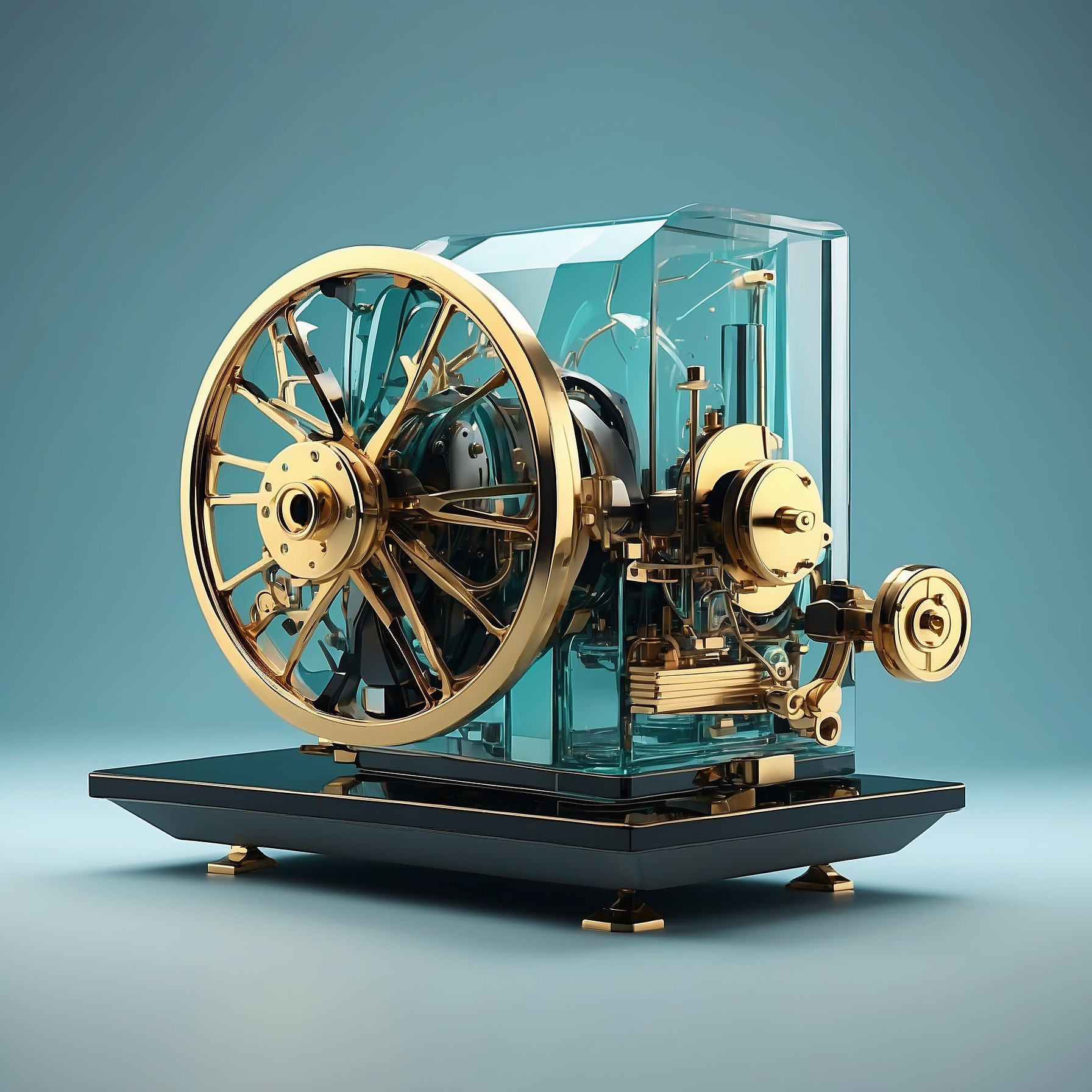So, you’ve heard about the Industrial Revolution, right? That wild time when we swapped horse-drawn plows for steam-powered everything? Buckle up, because we’re diving deep into the First Industrial Revolution—the OG of industrial upheavals. Forget the sleepy agrarian past; we’re talking factories popping up like mushrooms, machines taking over manual labor, and a complete shake-up of society as folks knew it.
This whirlwind kicked off in Great Britain around the mid-1700s. Picture this: quaint villages giving way to bustling cities, and handcrafted goods being shoved aside by mass-produced products. It wasn’t just a British party for long, though. This industrial fever spread globally, setting the stage for the Second Industrial Revolution in the U.S. during the late 1800s. But let’s not get ahead of ourselves. We’re here to break down the first one—the inventions that sparked it, the causes that fueled it, and the effects that still ripple today. Ready to roll? Let’s get into it!
See also: Was the Bracero Program good or bad?
When Was the First Industrial Revolution?
Alright, let’s set the scene. The First Industrial Revolution kicked off in the mid-1700s—somewhere between 1750 and 1760, to be semi-exact. Pinning down the exact year is like trying to find the start of a roll of tape, but hey, that’s history for you. This wasn’t a quick flash in the pan; it rumbled on until about 1840. During this time, Great Britain was the place to be. They were the trendsetters, pioneering a shift from hand-produced goods to machine manufacturing on a massive scale.
By the time the First Industrial Revolution wrapped up, the world had changed in ways people couldn’t have imagined a century prior. And just when you thought things couldn’t get any baffling, along came the Second Industrial Revolution in the late 19th century—also known as the American Industrial Revolution. But that’s a story for another day.

What Was the First Industrial Revolution?
So, what was this game-changing era all about? In a nutshell, the First Industrial Revolution was when humans decided they’d had enough of doing everything by hand. “Let’s build machines to do this stuff,” they said. And boy, did they ever! Starting in Great Britain, this period marked a massive shift from agrarian societies to industrialized and urban ones.
We’re talking about a leap from muscle power to mechanical power. Coal and iron became the lifeblood of industry. Innovations like the steam engine and the spinning jenny weren’t just cool gadgets—they revolutionized how products were manufactured. Instead of crafting goods in small workshops or homes, people flocked to factories where machines did the heavy lifting (literally and figuratively).
Sure, the working conditions were rough—long hours, low pay, and let’s not get started on the safety standards (or lack thereof). But for many, it was still a step up from the unpredictable life of farming. Plus, cities offered something new: a chance to be part of something bigger, even if it meant breathing in a bit more coal dust than was probably healthy.
Characteristics of the First Industrial Revolution
- The Factory System: Say goodbye to cottage industries! Work moved from homes to centralized locations—factories. Here, labor was divided and specialized, making production more efficient but also more monotonous.
- New Materials: Iron and coal were the new black. These resources became essential, fueling machines and constructing infrastructure.
- New Energy Sources: Coal-powered steam engines replaced human and animal labor. The steam engine was like the smartphone of its day—a total game-changer.
- Innovative Machines: Inventions like the spinning jenny and the power loom revolutionized textile manufacturing. Machines could produce goods faster than ever before.
- Advancements in Transportation: Enter the steam locomotive and the steamship. Goods (and people) could now travel farther and faster, shrinking the world figuratively, long before the internet did it literally.
- Reduced Product Prices: Mass production led to an abundance of goods, which drove prices down. More people could afford products that were once considered luxuries.
- Science Meets Industry: There was a new focus on applying scientific principles to industrial processes, leading to continuous technological growth.
All these characteristics combined to create a perfect storm of industrial progress. The First Industrial Revolution didn’t just tweak the way things were made—it overhauled society from top to bottom. And while it wasn’t all smooth sailing (looking at you, urban pollution and worker exploitation), it set the stage for the modern world.
Oh, and a quick shoutout to the steam engine again. This marvel didn’t just make factories run smoother; it slashed production times and cut labor costs, which meant cheaper goods for consumers. It was a win-win—well, except for the folks who had to work those long factory hours.
Related: The Industrial Revolution and its Consequences
Causes of the First Industrial Revolution
- The Emergence of Capitalism
- European Imperialism
- The Agricultural Revolution
So, what lit the fuse on this industrial powder keg? Historians usually point to these three big causes. Let’s break them down, shall we?
The Emergence of Capitalism
First up, capitalism. In the 18th century, something called laissez-faire capitalism started gaining ground in Britain. “Laissez-faire” is just fancy French for “let it be,” meaning the government took a hands-off approach to the economy. Private individuals and businesses were free to trade and operate as they saw fit, aiming for profit without much government interference.
This economic freedom encouraged entrepreneurs to invest heavily in new technologies and industries. Without a bunch of red tape, innovation flourished. Wealthy investors poured money into factories, machinery, and new production methods. Capitalism didn’t just grease the wheels; it built the entire vehicle that was the Industrial Revolution.
European Imperialism
Next, let’s talk about European imperialism. While not exactly the most ethical chapter in history, imperialism played a significant role. European powers expanded their empires, colonizing vast territories around the globe. This provided them with an abundance of raw materials—think cotton from India or timber from North America.
These resources were shipped back to Europe, fueling the factories and the economies of industrial nations. Plus, colonies became new markets for European manufactured goods. It was a cycle of supply and demand on a global scale, and it kept the industrial engines humming.
The Agricultural Revolution
Last but not least, the Agricultural Revolution. Before we had factories churning out goods, we had farms producing food—and lots of it. Advances in farming techniques and tools increased food production significantly. Innovations like crop rotation and the seed drill made agriculture more efficient, requiring fewer workers.
This freed up a large segment of the population to do something other than farming. Where did they go? Straight to the factories. Moreover, Britain’s abundance of coal and the development of coal mining (thanks to the steam engine) provided the energy needed for industrialization. So, the Agricultural Revolution didn’t just fill bellies; it laid the groundwork for industrial growth.

Check out: When did the Bracero Program start and end?
How Was the First Industrial Revolution Different from the Second?
Now, you might be thinking, “Industrial Revolution is Industrial Revolution, right?” Not quite. The First Industrial Revolution was like the opening act, setting the stage with steam power and textile manufacturing. The Second Industrial Revolution, starting around 1850, was the headliner—bringing in steel production, electricity, and the internal combustion engine.
The biggest difference? Electricity. While the first revolution ran on steam and coal, the second harnessed electric power, leading to inventions like the telephone and the light bulb. Communication technologies boomed, and industries became more efficient. Think of it this way: the first was about building the machine, and the second was about plugging it in and turning it on.
Table: First Industrial Revolution vs Second Industrial Revolution
| Factors for Comparison | First Industrial Revolution | Second Industrial Revolution |
| Time Frame (Years) | 1760 – 1830 | 1850 – 1914 |
| Methods of Production | From hand to machine | Increased automation |
| Mass Production | Textiles | Steel (Bessemer process) |
| Power Sources | Coal, water, and steam | Electricity and petroleum |
| New Engines | Steam engine | Internal combustion engine |
| Inventions | The spinning jenny, water frame, spinning mule, cotton gin, etc. | Automobiles, chemicals, railroads, telegraph, radio, telephone, etc. |
| Standard of Living for the Working Class | Awful | Still bad but improved |
How Were the First and Second Industrial Revolutions Similar?
Despite their differences, both industrial revolutions had some common threads (pun intended). Both periods saw massive technological advancements in societies driven by free-market capitalism. Scientific innovation was the name of the game, leading to increased automation and mass production.
Socially, both eras experienced population growth, urbanization, and shifts in labor. People moved from rural areas to cities, crafting a new urban workforce. Wage labor became the norm, and the class structures started to wobble under the weight of economic change.
First Industrial Revolution Inventions
- Watt’s Steam Engine (1764): James Watt didn’t invent the steam engine, but he darn sure made it better. His enhancements allowed for more efficient power, fueling factories, ships, and locomotives.
- Steam Railway Locomotive (1803): Richard Trevithick developed the first steam-powered railway locomotive, revolutionizing transport and commerce.
- The Water Frame (Patented in 1769): Richard Arkwright’s invention used water power to drive spinning frames, boosting textile production.
- Spinning Jenny (Patented in 1770): James Hargreaves created a machine that could spin multiple threads simultaneously, increasing yarn production exponentially.
- Spinning Mule (1779): Samuel Crompton combined features of the spinning jenny and the water frame, producing stronger and finer thread.
- Cotton Gin (1793): Eli Whitney’s invention automated the separation of cotton fibers from seeds, skyrocketing cotton production.
- Power Loom (1785): Edmund Cartwright’s machine mechanized weaving, making textile manufacturing faster and less labor-intensive.
- Flying Shuttle (Patented in 1733): John Kay’s invention sped up the weaving process and allowed for the production of wider fabrics.
These inventions didn’t just make life easier; they transformed industries. The textile industry, in particular, benefited massively. Britain became a global textile powerhouse, thanks in large part to these technological advancements.
And let’s not forget the improvements in iron production. The switch to coke for smelting iron (instead of charcoal) increased efficiency and output. This iron was then used to build machines, railways, and ships—feeding back into the cycle of industrial growth.

Related: Capitalism examples and theory
Effects of the First Industrial Revolution
- Created employment opportunities
- Horrible working and living conditions for workers
- Child labor (not the good kind)
- Inspired innovation
- Increased production levels
- Urban pollution
- Improved people’s way of life (eventually)
- Changed social structures
The First Industrial Revolution was a mixed bag, to say the least. It propelled humanity forward technologically and economically but also brought about significant social challenges. Let’s unpack these effects.
Created Employment Opportunities
On the plus side, the Industrial Revolution created a slew of new jobs. Factories needed workers—lots of them. People flocked from rural areas to cities in search of employment. Wages in factories, albeit low, were often better than what could be earned through farming. This shift offered people a chance to improve their financial situations.
Horrible Working and Living Conditions for Workers
But here’s the rub: working conditions were, frankly, terrible. Long hours, minimal breaks, and unsafe environments were the norm. Workers had little to no rights, and labor laws were virtually non-existent. As for living conditions? Overcrowded slums with poor sanitation led to the spread of diseases like cholera. It was a rough life for the working class.
Child Labor
If you think adult working conditions were bad, imagine being a child during this time. Child labor was rampant. Kids as young as five were employed in factories and mines, doing dangerous work for meager wages. Their small size made them ideal for tasks like fixing jammed machines—often leading to horrific injuries.
Inspired Innovation
On a brighter note, the era was a hotbed of innovation. The challenges of industrialization spurred inventors to create solutions that have had lasting impacts. The groundwork laid during this period led to advancements in the Second Industrial Revolution and continues to influence modern technology.
Increased Production Levels
Thanks to the new machinery and factory systems, production levels soared. Goods could be made faster and cheaper than ever before. This mass production led to economies of scale, reducing costs and making products more accessible to a broader audience.
Urban Pollution
However, all that industrial activity wasn’t kind to the environment. Factories belched smoke and soot, leading to severe air pollution. Waterways became dumping grounds for industrial waste. The environmental impact was significant and is still being addressed today.
Improved People’s Way of Life
Despite the hardships, the long-term effects included improvements in living standards for many. Over time, technological advancements led to better housing, transportation, and consumer goods. The increased availability of products improved daily life, even if these benefits weren’t immediately felt by the working class.
Changed Social Structures
The Industrial Revolution shook up the social order. A new middle class emerged—factory owners, merchants, and professionals who enjoyed comfortable lifestyles. Meanwhile, the working class faced hardships but also began to organize. Labor unions and movements started to take shape, laying the groundwork for future social reforms.
In summary, the First Industrial Revolution was a catalyst for monumental change. It had its fair share of drawbacks, particularly concerning worker welfare and environmental impact. However, it also set humanity on a path toward modernization, technological advancement, and, eventually, improved standards of living.
